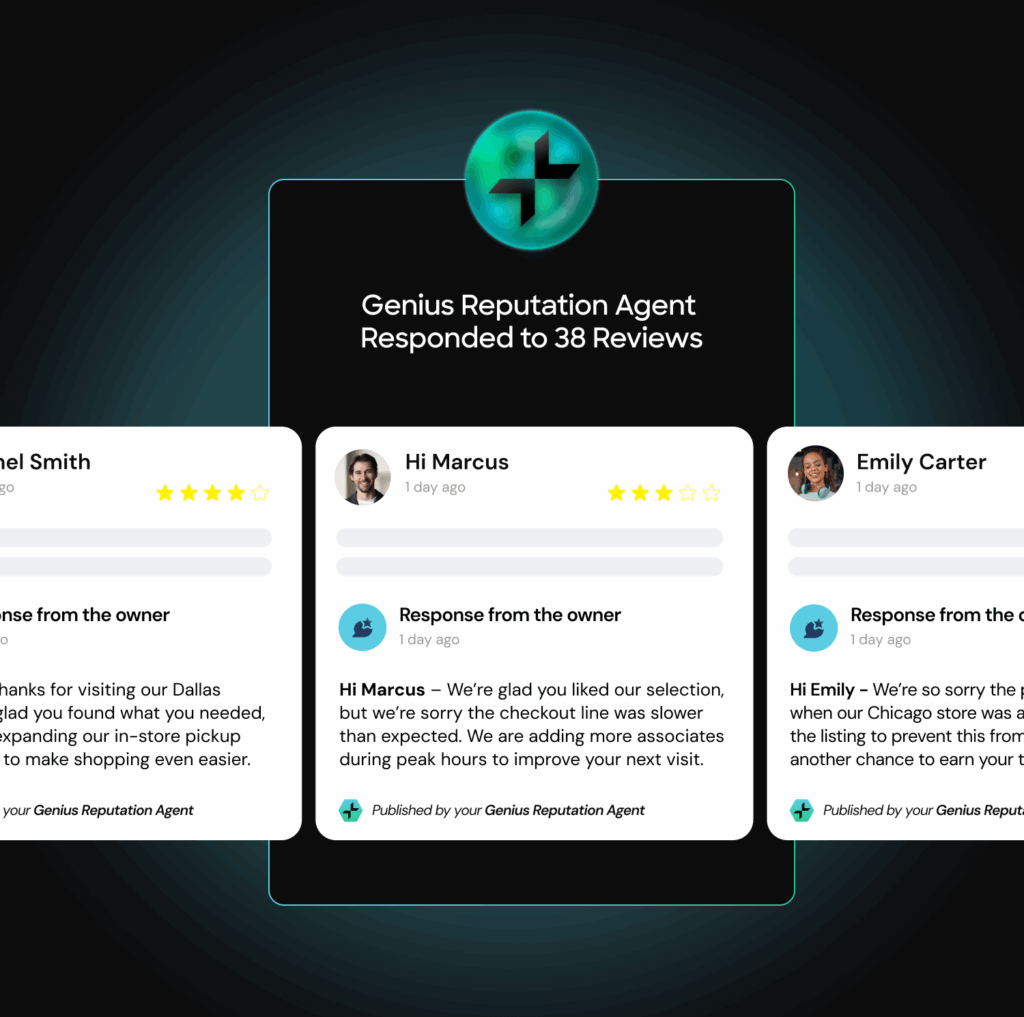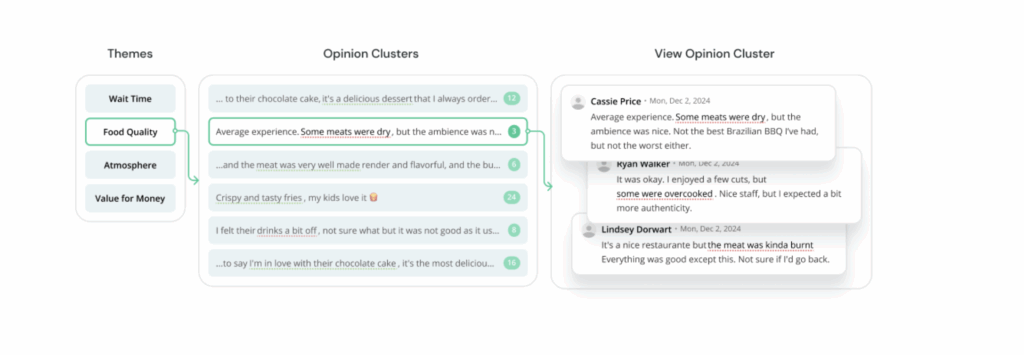Why “Dry Chicken” and “Overcooked Meat” Mean the Same Thing
Summary
Customer feedback may sound different, but often points to the same issue. Learn how grouping similar reviews by meaning helps teams uncover trends, reduce noise, and respond with clarity.
If you’ve ever tried to make sense of online reviews, you know they don’t always say things the same way even when customers are describing the same experience.
One person says, “The chicken was dry.”
Another writes, “Steak was overcooked and chewy.”
A third says, “Food lacked flavor and felt old.”
Each review is different. But they’re all talking about the same problem: a disappointing food experience.
And if you don’t have a way to connect those dots, you might miss what’s really going on.
The Problem with Exact Words
Many feedback tools rely on keyword tracking or basic tags to organize reviews. That works if all your customers use the same phrases. But they don’t.
- Some people are blunt. Others are polite.
- Some use emojis. Others write full essays.
- Different people describe the same thing in different ways.
That means important issues can slip through the cracks just because they weren’t phrased the way your dashboard expected.
One Theme, Many Voices
The power of review analysis isn’t just in seeing the words customers use. It’s in understanding what they actually mean.
Great feedback tools can recognize when multiple phrases are pointing to the same core issue. They go beyond surface-level language and group similar opinions together into clear, high-level takeaways.
That way, you don’t just see “dry chicken”, “overcooked steak”, or “tough meat”, but you see one insight: Customers are having problems with food quality.
And you see how often it’s coming up, where it’s happening, and whether it’s trending up or down.
Clarity Without Guesswork
It’s not about removing nuance or dumbing things down. It’s about making insight easier to access and act on while still staying true to the customer’s voice.
The best part? These themes aren’t pulled from thin air. Each one is backed by real customer comments you can click into, read, and trust.
This isn’t AI making things up. It’s AI helping you hear what your customers are already saying but more clearly and more efficiently.
The Value of Pattern Recognition
When you can group customer comments by shared meaning instead of exact wording you can spot trends earlier, reduce noise and repetition, and act with more confidence, based on the entire picture. And most importantly, your team spends less time interpreting data and more time using it to improve the customer experience.

Learn how smarter review insights can drive real impact.
Your customers are speaking. They just don’t all use the same words. We’re building tools that help you listen more clearly, no matter how they say it.





